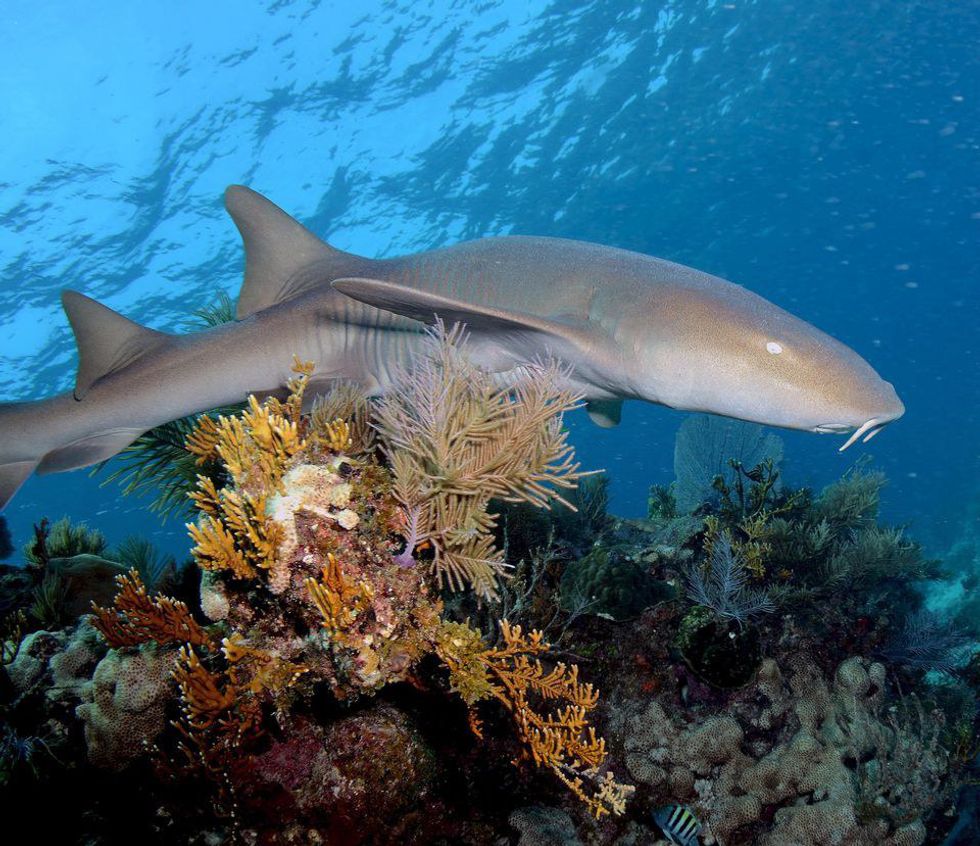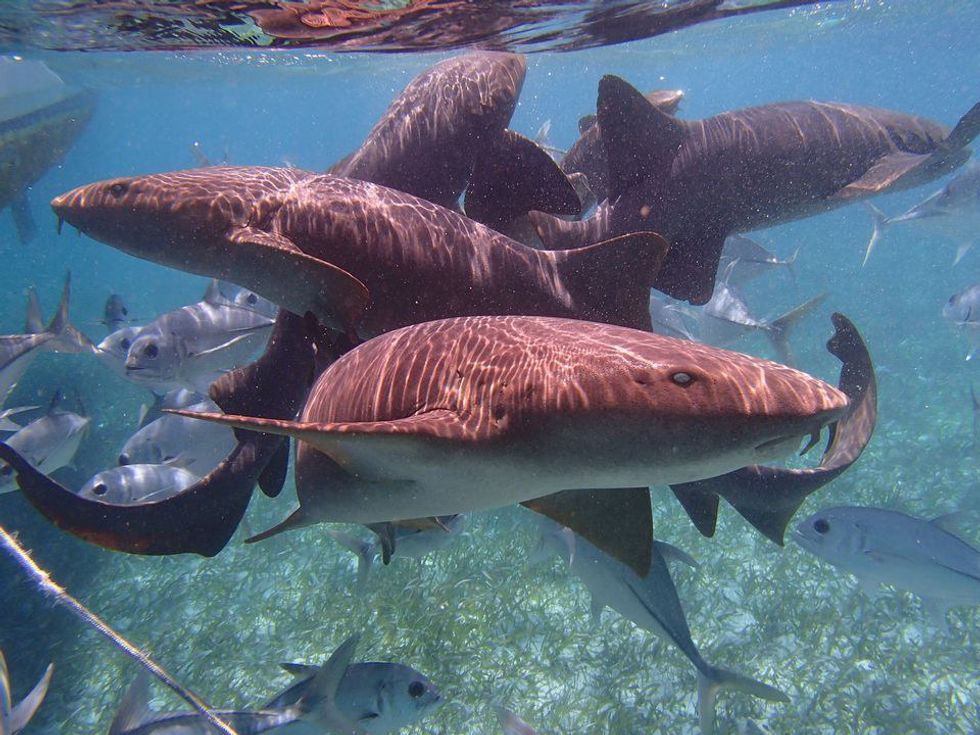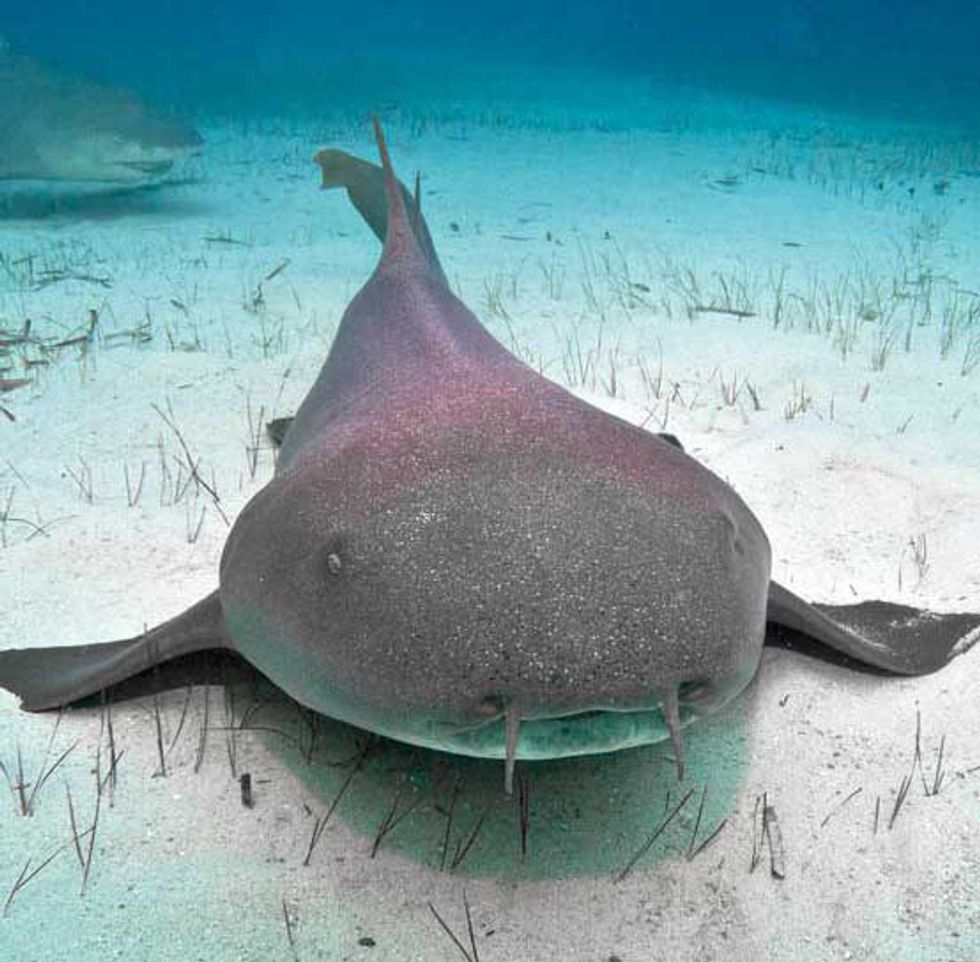For this week’s “Species Spotlight!” we will be covering a very docile (and, dare I say adorable), species of shark. This species of shark is called the nurse shark!
Ginglymostoma cirratum is the Latin species name for the nurse shark. Try saying that three times fast! According to National Geographic, the species name is derived from both Greek and Latin, and means “curled, hinged mouth”, describing the nurse shark’s unique mouth structure. National Geographic also states that the origin of the name “nurse shark” is unknown, but they have some theories about it. One theory is that they got the name from the sucking noise they make when hunting for prey on the ocean floor, which is similar to that of a nursing infant. It could also stem from the archaic word nusse, which means “cat shark”. They say the theory that is most likely true is that the name derives from the Old English word for sea-floor shark, hurse.
Photo by C. Kraska
The nurse shark is a bottom-dwelling shark, meaning they prefer to hang out on the seafloor. They typically tend to stay in the shallower waters along coasts. One thing that makes the nurse shark so unique, is that unlike other sharks, nurse sharks do not have to move in order to breathe. Most sharks have to keep moving in order to allow the water to flow over and into their gills, but nurse sharks can stay stationary, facing the direction the water is flowing from and pumping it into their gills as it passes over them.
While they are not particularly pod animals, they do tend to hang out in social groups of up to 40 individuals. Sometimes they even pile on top of each other. It is speculated that this is a method of protection from larger predators. They are nocturnal, and so at night they will wander off alone. This is when most of their hunting happens. Having small mouths, they are unable to consume large fish. Instead, they mainly hunt mollusks, crustaceans, and smaller fish. They catch their prey by sucking them into their mouths, making a sucking noise that is unique to this species. Along with prey animals, they have also been seen grazing for algae and ground corals.
Photo by Craig Hatt
Gestation within nurse sharks lasts about 6 months, and according to Shark Sider, up to 30 pups can be born at a time. Like other sharks, cannibalism does happen between nurse shark pups, the strongest eating the weak. With about 30 pups being born at one time, this evolutionary method is to ensure the strongest individuals survive and have a chance at reproducing, spreading the best-fit genes across the population. When the pups are born, their skin is spotted for better camouflage. As they grow older, their spots disappear.
The nurse shark is one of, if not the most, docile of all shark species. They are naturally curious and inquisitive. There are locations where you can swim with nurse sharks and pet them. One video in particular that was going viral very recently showed a woman walking in the water in a nurse shark enclosure, and a school (or group) of nurse sharks slowly swam up to her. She began to pet one on the head, and then the rest swam closer and joined in, wanting to get petted themselves. Only a few nurse shark attacks have been recorded, and only one being unprovoked. There have never been any fatal nurse shark attacks. However, they are still a wild animal, and should be treated with respect. If you treat them with respect, you are sure to have a wonderful time swimming with these gentle sharks if you so choose!
The nurse shark currently does not have any conservation status. Right now they are low-risk, but their proximity to human activity is beginning to put pressure on the species, according to National Geographic. It is best to keep an open mind and obtain awareness about these sharks and other species that are living among them so that they are not under threat.
























